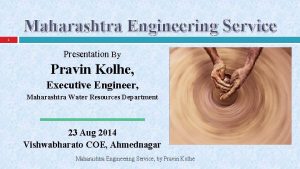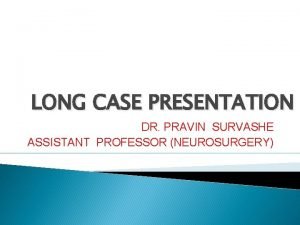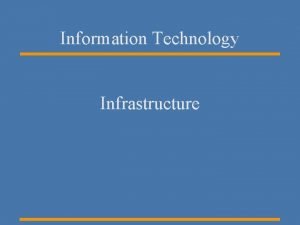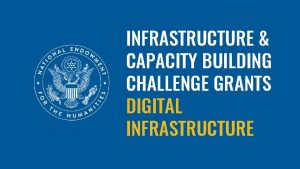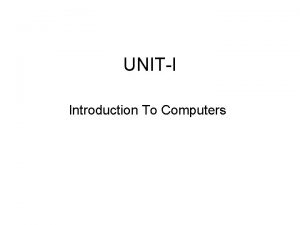UnitI Introduction to Infrastructure Mr Pravin Mane Dept


















- Slides: 18

Unit-I Introduction to Infrastructure Mr. Pravin Mane Dept. of Civil Engineeirng

Agenda • What is infrastructure? • Types of infrastructure • The role of infrastructure • The infrastructure crisis • Forthcoming infrastructure national and global level projects at

What is Infrastructure? • There is no single definition for the term “infrastructure”. It is a term used in a variety of disciplines • The “Merriam Webster” Dictionary defines infrastructure as “The underlying foundation or basic framework (as of a system or organization)”

Attributes of Infrastructure • Rather than describing infrastructure through a single definition, it might be more helpful to describe infrastructure through a set of characteristics that are attributed to it. • Some of these characteristics that are popularly associated with infrastructure are: – Infrastructure facilities are generally available to large

Attributes of Infrastructure (cont. ) – Infrastructure helps deliver essential services for the functioning of an organization or society – Infrastructure helps achieve economic and social objectives – Infrastructure is the base upon which society and its activities rest – Examples of infrastructure are waterways, roads,

Types of Infrastructure • Several systems can be characterized as infrastructure – including Computer Systems that network and serve data and applications, educational curriculum and so on. • For the purpose of this course, we will narrow down our perception of infrastructure and restrict it to PHYSICAL INFRASTRUCTURE of the

Hard or Rigid Infrastructure • Transportation Infrastructure E. g. : Roads, Bridges, Airports, Ports, Waterways • Water and Sanitation Infrastructure E. g. : Water Supply Systems, Sewage treatment systems • Energy Infrastructure E. g. : Dams, power plants, power distribution and transmission

Soft Infrastructure • Economic Infrastructure • Social Infrastructure • Housing, Facilities and Recreation

The Role of Infrastructure The importance of infrastructure is two-fold • Infrastructure is instrumental in promoting economic growth • Infrastructure also plays a role in alleviating poverty (make less severe the state of being extremely poor)

Infrastructure, Economic Growth and poverty reduction Economic Growth Poverty Reduction More Transportation reliable access to Faster access to destinations, markets so that fresher goods increase in productivity can be sold at lower wastage levels Water And Sanitation Incentives for construction of Improved health, reduction in facilities, health infrastructure and residential infrastructure, which related spending, potential increase in income in turn promote economic growth savings

Infrastructure, Economic Growth and poverty reduction Economic Growth Improved Telecommunications access Poverty Reduction and Increased access to transfer of data, leading to information leading to reduced travel times and improved ability to make increases in productivity decisions on issues like selling price of product etc Reliable Energy and abundant 24 hour electricity increase power enables setting up of the industries and residences productive that jobs, thereby augmenting income, manufacture products and increasing agricultural yields promote economic growth etc. create duration of the working day,

The Infrastructure Crisis • Despite the importance of infrastructure for economic and social well-being, we are faced with several problems • Infrastructure in developed countries is old, unreliable, inefficient and in need of replacement. • In developing countries, infrastructure is often not available – Large portions of urban and rural populations in

The Infrastructure Crisis (cont. ) – Power supply is non-existent or unreliable and people are faced with frequent power-cuts – Quality of road infrastructure is often bad, leading to long travel times and increased vehicle maintenance costs. – Width of roads is also often a constraining factor leading to traffic jams and blocks. – Several of these problems currently hold true for

The Infrastructure Crisis (cont. ) • This is therefore a golden opportunity for engineers with technical as well as managerial and policy level knowledge of these issues, since there is a huge demand for such people to enter the workforce and solve the worlds infrastructure inadequacies.

Why do we have so many problems with infrastructure? • This particular question and ways in which to solve it will the focus of this entire course. • It is therefore impossible to answer this question right away.

• Before we conclude this session, we list out a few of the causes for the failure to provide adequate infrastructure – Lack of funds – Lack of implementation and management capabilities – Corruption, bureaucracy and unfair competition – Land acquisition issues involving dealing with

Five Year Pans • First Five-year Plan - 1951 Second Five Year Plan: 1956 Third Five Year Plan: 1961 Plan Holiday: 1966 to 69 due to Indo – Pak War. Fourth Plan: 1969 Fifth Plan: 1974 Sixth Plan: 1979 Seventh Plan: 1984 No plan due to frequent change of 1989 - 90 -91 -92 government at the centre Eighth Plan: 1992 Ninth Plan: 1997 Tenth Plan: 2002 Eleventh Plan: 2007 -12

 Pravin kolhe mpsc
Pravin kolhe mpsc Dr pravin survashe
Dr pravin survashe Jain agam literature
Jain agam literature Pravin chaturvedi
Pravin chaturvedi 1 yojan in jainism
1 yojan in jainism Pravin kolhe
Pravin kolhe Stati uniti settore primario
Stati uniti settore primario Composizione di omotetie
Composizione di omotetie Associazione studenti e professori di medicina uniti per
Associazione studenti e professori di medicina uniti per Ai promis c-ai sa revii
Ai promis c-ai sa revii Mane volje
Mane volje Imkit mane ir skaitykit
Imkit mane ir skaitykit Drustvene mreze prednosti i mane
Drustvene mreze prednosti i mane Mane program
Mane program Očitovanje volje primjer
Očitovanje volje primjer My mane bio
My mane bio Dr rajaram mane
Dr rajaram mane Landing mane
Landing mane Mane oka
Mane oka
